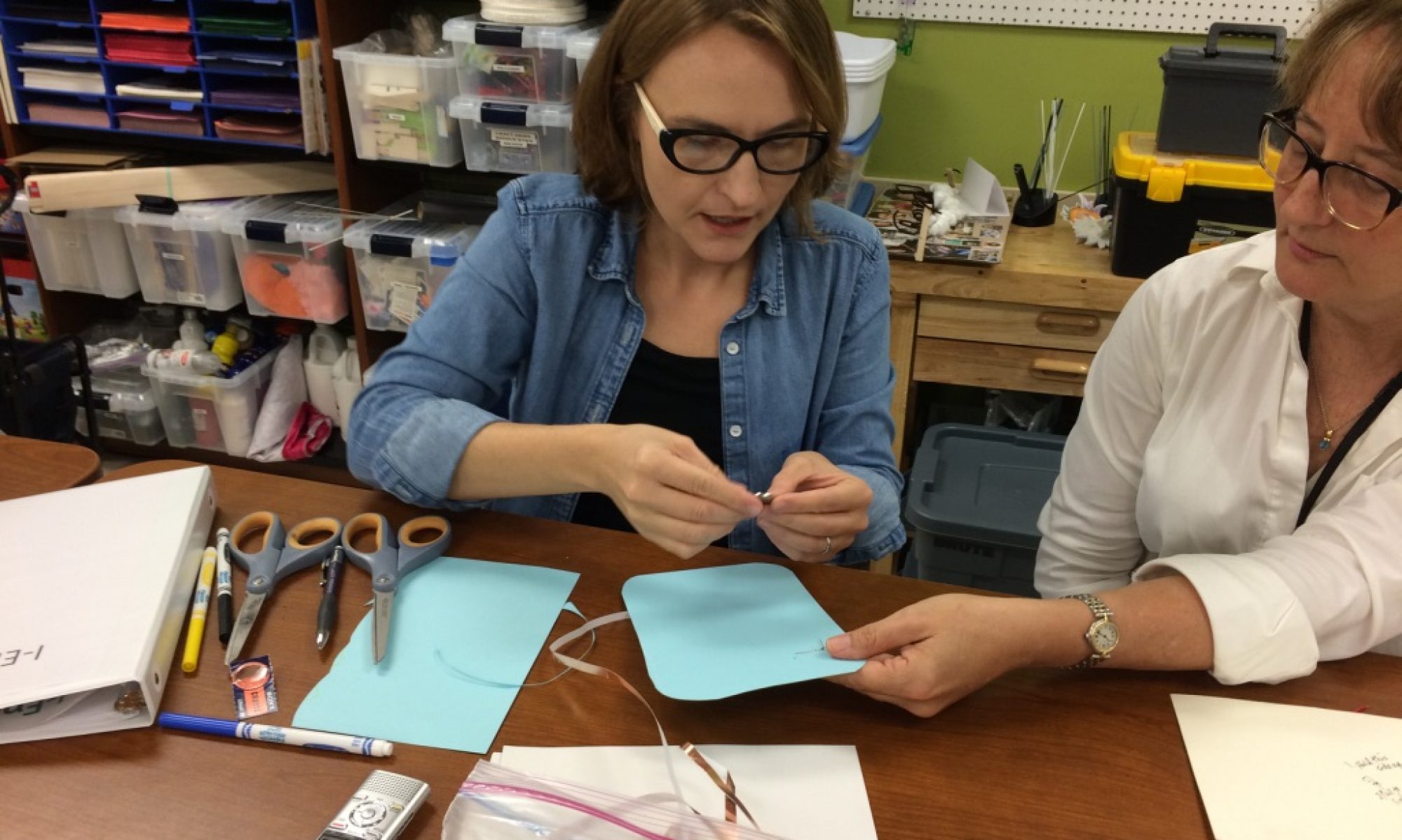Cannot find your stuff? Consider the light-up school desk!
June’s Light-up Desk
While participating in a middle school engineering unit that focuses on engineering for sustainable communities, 6th grader June created a light-up desk in response to feedback from her class’s community survey on problems their school community is concerned about. As she explained:
“Kids in school keep many books and other things in their desk but have trouble finding stuff because our desk cannot be opened and you have to stretch your hands in to search for things deep inside, with no light to help you see. Sometimes kids get into trouble because they are taking too long to find their stuff. My light-up desk system is portable and powered by a hand crank. If you want to move it to light another desk you just reach in and fold the “L” shape parallel circuit and take it out. The parallel circuits are on two hard pieces of cardstock that fit along the side and back of the desk.”
In her initial sketch-up design, June enlisted Edna’s help in drawing a 3D version of the “inside of the desk” because she said it was “important to show the inside for the design” and she is “bad at drawing”. The sketch below is how Edna represented what June articulated for her to draw.

One challenge was that the first copper circuit broke and the patch up did not allow the circuit to work past a certain point, so we figured this out with the help of another student, and she put the circuit on again very smoothly and straight, and she got the whole circuit to light up LED lights.
June also made sure to measure two pieces of stiff cardboard that are exactly the length and breath of the desk, with the correct “height” (thickness of the desk cavity), with a fold right at the “joint” of the desk so that the system can be quickly unfolded and fit into the inside of the desk.
June used coin cell batteries to test out her light-up desk system to test bulbs and that the circuits worked. Since she had 4 white LED lights, which required considerable power (at least 13 watts), June switched the power source to a hand crank generator. This way she said “you don’t have to spend money on batteries, you just turn the hand-crank when you need to light up and see what’s inside your desk.” She later taped the hand crank to one of the front legs of the desk.
Teaching Engineering for Sustainable Communities in the Middle School
The I-Engineering project works to co-develop and implement energy engineering for sustainable community units with middle school students and teachers. These units support youth in designing solutions to challenges that matter to their local community. Youth develop expertise in renewable energy systems, circuitry, engineering practices and community ethnography. Through this work, the I-Engineering team has developed and collected resources that will support others in teaching engineering for sustainable communities and in ways that support youth in developing STEM knowledge and practices, and engaging in productive identity work in engineering, capable of making a difference in the world. This site shares these materials.
Funded by the National Science Foundation, DRL #1502755
PIs: Angela Calabrese Barton (Michigan State University), Edna Tan (University of North Carolina at Greensboro), and Scott Calabrese Barton (Michigan State University).
This project is funded by the National Science Foundation, grant 1502755. Any opinions, findings, and conclusions or recommendations expressed in these materials are those of the author(s) and do not necessarily reflect the views of the National Science Foundation.

